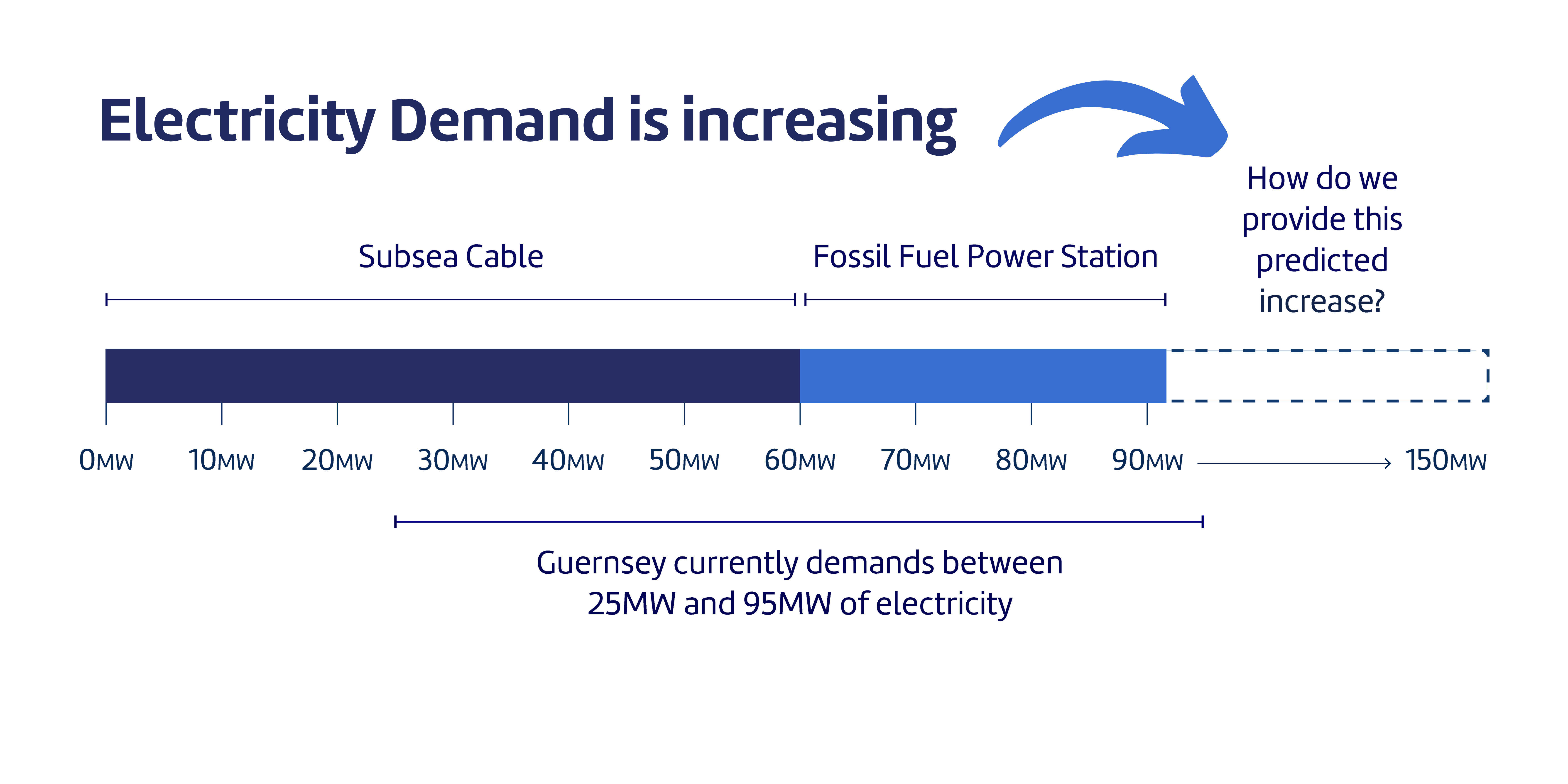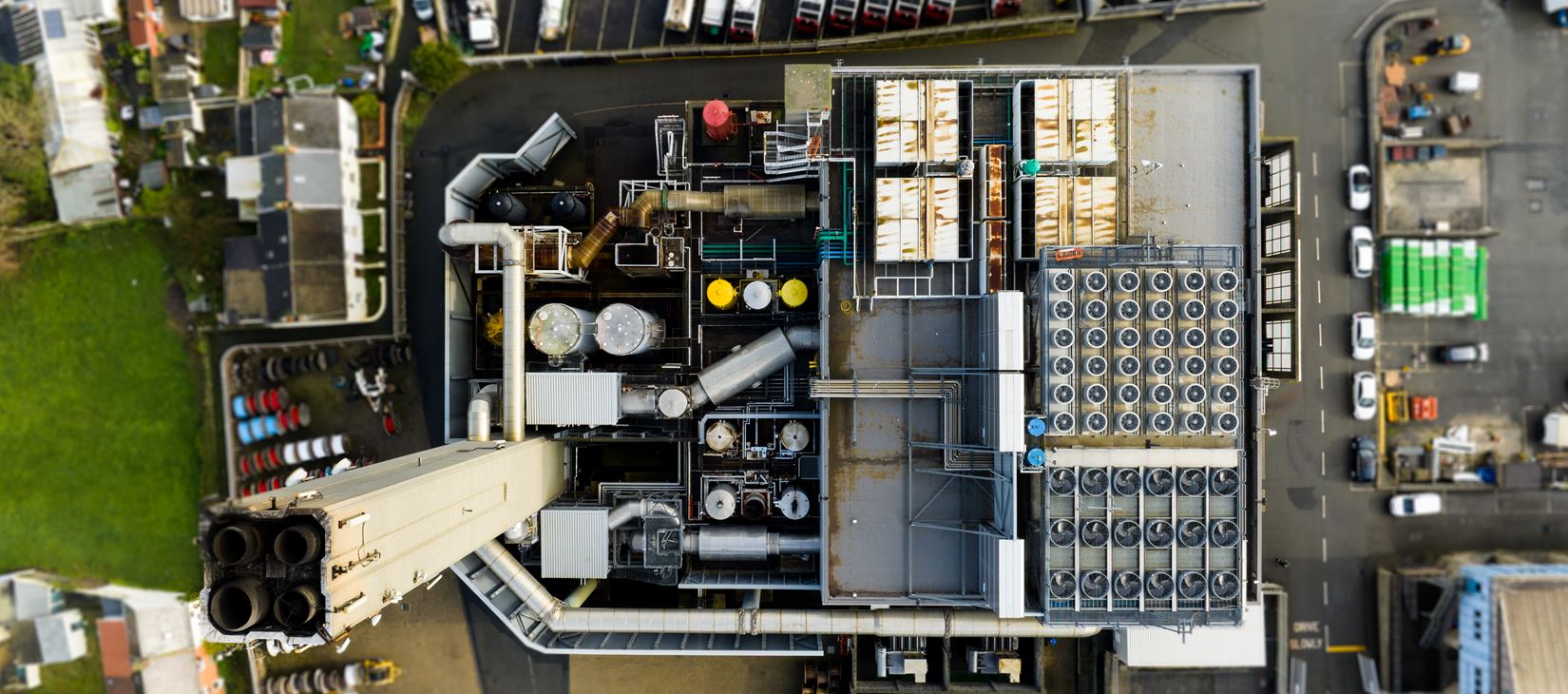
As islanders continue to embrace the energy transition and adopt lower carbon alternatives like electric transport and heating, Guernsey is becoming increasingly electrified. This is great, as electricity in Guernsey is a low carbon product, but what does this increased electricity demand mean for us all?
-
How is electricity demand changing?What will happen?
By 2050 it is predicted that most heating systems and road vehicles, such as cars, vans, buses and light goods vehicles, will be electric. And though 2050 seems some way off, we expect the peak demand to reach around 150MW by 2050. This is a significant increase in demand, and if provided for by burning fossil fuels in the power station will increase the carbon intensity of electricity, meaning that the journey net zero is at risk.
-
How you can help balance the networkFind out how
Electricity demand varies. There are times when people require a lot of energy, we call this ‘Peak demand’, and it happens around breakfast, lunch and dinner, this is simply because more people are home and using electronics. There are other times when we have plenty of spare capacity, this tends to happen overnight, and in select periods in the day, we call this 'off-peak'. Powering life in ‘off peak’ is an easy way to reduce your bills and help balance the network.
-
Is Guernsey’s grid ready for the electric future?Preparing our network
Electricity in Guernsey is already a low carbon energy and with the right supply infrastructure, can remain the leading energy product to support the decarbonisation of the Island’s energy system.
The evolution of the way we use energy will deliver significant environmental benefits for our Island and our economy. Guernsey Electricity remains focused and committed to appropriately planning for these future electricity needs but to get there, we must continue the concerted effort to ensure our network is fit for Guernsey’s electric future.

What are the options for future energy sources?
-
Solar
Whilst one of the more advanced technologies, the intermittent nature of solar energy (only generates in the day) limits the reliability. On very sunny days, Guernsey would generate too much, so we would need batteries or to ability to export via a subsea cable.
To provide 70 Megawatt (MW) of electricity from solar, 175,000 solar panels are required and each MW requires about 2.5 acres of space.
-
Wind
Wind energy is commercially viable, and research has shown a promising local resource for an offshore development. Consideration would be needed around impacts to the environment, fisheries and shipping for example. The fluctuation in wind would require battery storage or a second subsea cable to export energy.
-
Wave
Technology is still developing, and waves are an unreliable and unpredictable energy source.
Research has identified three potential locations but there are no technologies which are at a commercial scale. -
Tidal
Tidal energy is predictable, and we have one of the largest tidal ranges in the world which could be harnessed via tidal stream, barrage or lagoon. The local potential has been investigated but there are limited installation sites. It is expensive, there are environmental impacts and the power produced does not always match up with energy demand. Battery storage or a second subsea cable would be needed for when supply exceeds demand.
-
Fossil fuel power station
Generating from the power station is dependable, but significant upgrades are required imminently. As one of the most carbon emitting sources, it brings significant financial and environmental costs, threatening our ability to meet net zero.
-
Second subsea cable
A 100MW cable would provide enough electricity for the island and allow for the decabonisation of heating and transport in Guernsey, meaning the power station would no longer be required.
It would also provide the security to enable more local renewables and the ability to export and sell any excess energy.










